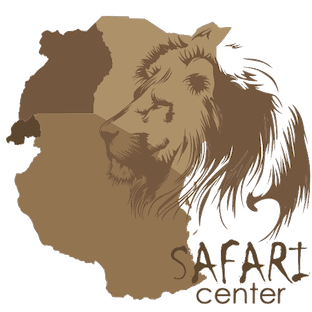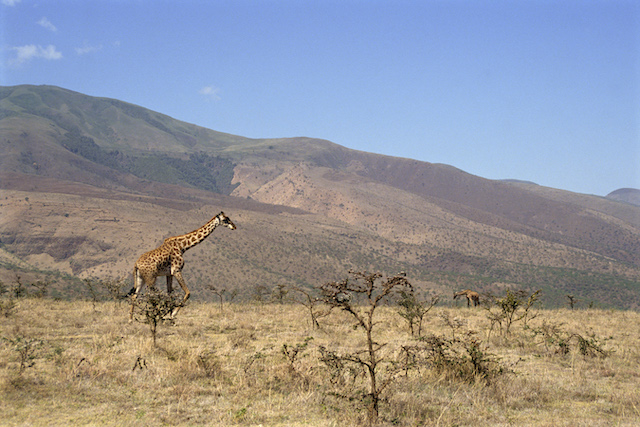Your Ultimate Guide to a Kenya Safari Adventure
Kenya is one of Africa’s premier safari destinations, with an unmatched wildlife experience which has captivated visitors for generations. From the mythic Great Wildebeest Migration to witnessing the Big Five in their natural habitat, a Kenyan safari promises a lifetime of memories. Whether you're a rookie or a seasoned safari aficionado, an understanding of what you can expect can help you make the most of this one-of-a-kind experience.
The Enchanting Wildlife in Kenya
The country has diverse ecosystems, and these contain a tremendous amount of wildlife, making it one of the continents' most biodiverse countries. Its landscapes host over 1,000 species of birds as well as over 40 species of mammals, including all of the legendary Big Five: leopard, elephants, buffalo, rhinoceros, and lions.
The Masai Mara National Reserve, Kenya’s crown jewel, offers some of the most spectacular wildlife viewing opportunities on the continent. Here, vast savannas stretch to the horizon, dotted with acacia trees and teeming with life. Between July and October, the reserve becomes the stage for one of nature's greatest spectacles – the Great Wildebeest Migration. Over two million wildebeest, zebras, and gazelles thunder across the plains in search of fresh grazing, creating dramatic river crossings that showcase the raw power of nature.
In addition to the Mara, each of Kenya's other parks and reserves has something different. Amboseli National Park, for instance, offers breathtaking views of Mount Kilimanjaro against a backdrop of large elephant herds. Tsavo East and West, combined as one of the largest national parks on Earth, provide a harder, rawer wilderness experience. Lake Nakuru draws millions of flamingos, causing a pink spectacle against their alkaline lake. It is also host to numerous bird species and wildlife.
Game Drives: The Heart of Your Safari
Game drives lie at the core of every Kenyan safari experience. In early mornings and late afternoons when wildlife is at its most active, these excursions provide optimum wildlife viewing and photography opportunities. Your skilled safari guide will expertly maneuver the terrain as he shares with you information regarding animal behavior, tracking, and wildlife conservation.
Morning game drives typically begin before sunrise, allowing you to witness the African bush awakening. The golden light of dawn creates the perfect conditions for photography, while the cooler temperatures encourage predators to remain active. You might encounter a pride of lions returning from their nighttime hunt or witness elephants gathering at watering holes.
Evening excursions provide equally breathtaking adventures as the day cools down and nocturnal creatures start roaming. The African sunset is a spectacular setting as one scans for leopards getting ready with their sunset hunt or hears the eerie calls of hyenas on the horizon.
Accommodations: From Luxury to Adventure
Kenya offers accommodation options to suit every preference and budget. Luxury safari lodges provide world-class amenities while maintaining an authentic African atmosphere. These establishments often feature spacious suites with private decks overlooking prime wildlife areas, gourmet dining experiences, and spa services to help you unwind after exciting game drives.
For a truly authentic experience, there are traditional safari camps available with tented accommodations which allow you a closer interaction with nature. You can hear lions roaring into the distance or elephants passing by during the evenings and you will have an experience you will never forget as you will be connected intimately with the wilderness.
Budget-conscious travelers can choose from various mid-range options that still provide excellent safari experiences without compromising on wildlife viewing opportunities. Many operators, including Majestic Kenya, offer comprehensive packages that combine quality accommodation with expert guiding services.
Meeting Kenya’s People: Cultural Encounters
A Kenyan safari experience extends beyond viewing wildlife to participating in meaningful cultural interactions. The Maasai people, with their typical red clothing and aged customs, offer fascinating glimpses into centuries-old pastoralist society. A typical safari itinerary includes a visit to a Maasai village, where you can view their customs, participate in traditional dancing, and purchase authentic handicrafts.
Such interactions within cultures help put into perspective how wildlife and human populations coexist, and how they themselves are stewards of very same environments which fuel Kenya's tourism economy. Enjoying this dynamic enriches your safari experience and brings into perspective how crucial sustainable tourism efforts are.
Planning Your Safari: Timing and Logistics
Kenya has good weather all year round and is a great safari location at any time of the year you choose to visit. However, each time of year has its own benefits. For instance, during the dry season between June and October, wildlife viewing is excellent as it is concentrated around sources of water. Vegetation cover is also lighter.
On the other hand, the wet season from November through May changes the country into a green paradise. This is a superb time for spotting birds as migratory species converge and many of the animals calve with resultant lovely sights of mothers with their newborns. There are also fewer tourists during this period, allowing a more personal safari experience.
Most safari itineraries span 5-10 days, allowing adequate time to explore multiple parks and reserves. This duration provides the best balance between comprehensive wildlife viewing and avoiding safari fatigue. Shorter trips can still be rewarding but may require more focused planning to maximize your experience.
What to Pack: Essential Safari Gear
Proper preparation ensures comfort and enhances your safari experience. Neutral-colored clothing in lightweight, breathable fabrics works best for game drives. You should avoid bright colors and white, which can attract insects or startle wildlife. Long sleeves and pants provide protection from sun exposure and insect bites during evening drives.
Essential gear include a broad-brimmed hat, high-SPF sunscreen, bug repellent, and good walking shoes. Binoculars will extend wildlife viewing, and a good camera with extra batteries and memory cards will enable you to take those once-in-a-lifetime photographs. Almost all lodges and camps offer charging services. Nonetheless, a portable power bank brings peace of mind.
Do not forget personal medicines, including anti-malarial prophylaxis if prescribed by your health care provider. Most of Kenya’s safari regions are within malaria areas, so adequate prevention is important for your health and enjoyment.
Photography Tips: Capturing the Perfect Shot
Photographically, Kenya has breathtaking landscapes and wildlife aplenty. Successful safari photography depends on knowing about light and animal behavior. Early morning and late afternoon are ideal lighting sessions, with golden, warm light adding magic to photographs.
Photographing wildlife requires patience. Animals never pose on demand, so studying their habits allows you to anticipate photogenic moments. Your guide is a treasure here, as well, since they have knowledge of animal behavior and can maneuver your car into a perfect viewing and photography location.
Consider bringing both telephoto and wide-angle lenses to capture intimate wildlife portraits and sweeping landscape shots. Many lodges and camps offer photography workshops or guided photo safaris for enthusiasts looking to improve their skills.
Conservation and Sustainable Tourism
Safari tourism has emerged as one of the key pillars of wildlife preservation and community development within Kenya. National park and reserve gate charges directly pay into conservation activities, anti-poaching patrols, and habitat protection. Choosing responsible tourism operators dedicated to sustainable tourism makes a positive contribution toward these meaningful conservation efforts.
Many safari companies work closely with local communities, ensuring that tourism benefits extend beyond the industry itself. These partnerships create incentives for wildlife protection while providing alternative livelihoods that reduce human-wildlife conflict.
For those interested in comprehensive safari experiences that emphasize both adventure and responsible tourism, operators like Majestic Kenya offer all-inclusive safari packages that combine excellent wildlife viewing with sustainable practices and cultural sensitivity.
Having Memories You’ll Treasure
A Kenyan safari is about something more extraordinary – a transformative adventure allowing you to connect with nature at a deep level. Witnessing a lioness instructing her newborns how to hunt, a deafening uproar of wildebeest crossing a stream, or a tender interaction between elephant relatives makes you form deep emotional bonds long after you get back home.
Such experiences often develop increased respect for wildlife conservation and a delicate harmony between human development and preservation of the environment. Most visitors end up as African wildlife ambassadors, supporting efforts of preservation groups even after their safari adventure is over.
A Kenyan safari offers something for everyone: the adventurer, looking for thrills; the photographer, looking for a perfect shot; families, looking for a common experience; and lone adventurers, looking for self-discovery. Unparalleled wildlife, spectacular landscapes, a vibrant culture, and a warm reception all come together to make Kenya an unrivalled safari destination, continually delivering on and producing a lifelong experience worldwide for visitors.





